[ad_1]
The cervical spine is a very complex region of the spine. It influences both the cervical and lumbar spine and is the only area that’s attached to the rib cage.
It’s essential to ensure this area of the body is healthy and moving well. And, I’m excited to share 7 amazing and effective exercises to accomplish that.
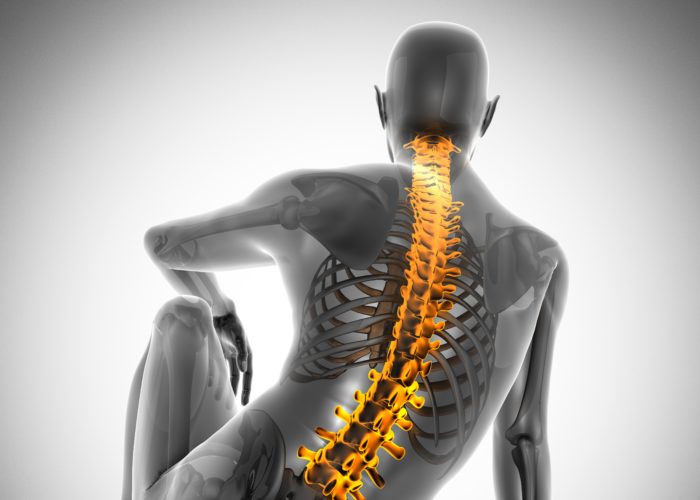
While we need to focus on stability around the lumbar spine, the thoracic spine needs some mobility to ensure neck and shoulder health.
Thoracic Spine Anatomy
The thoracic spine is the longest region of the spine—the cervical spine above and the lumbar spine below.
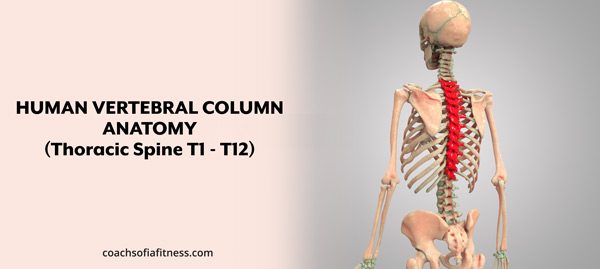
It runs from the base of the neck to the abdomen.
The thoracic spine starts just below the cervical vertebrae C7 and forms the middle part of the region. C7 connects to the top of the thoracic spine T1. This forms the cervicothoracic junction (1).
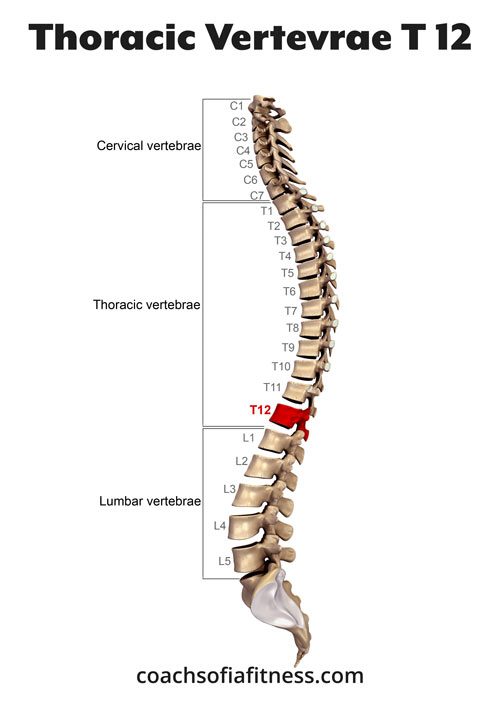
The thoracic area, vertebrae T1 through T12, connects to the lumbar spine (lower back) at the L1 vertebrae.
The thoracic spine is the only region of the spine that attaches to the rib cage, making it strong and stable. It’s why this area of the spine is less susceptible to injuries.
The lumbar spine lacks this support and foam rolling should be avoided.
The lumbar spine doesn’t have enough support like the thoracic spine. If you have an existing spinal condition, putting additional pressure on the discs can exacerbate the condition.
Recommended Program: Back Pain Control
Thoracic Spine Soft Tissue Structures
Like the rest of the spine, tendons, ligaments, and muscles attach to the thoracic spine and help stabilize it during movement (2).
Ligaments: Bands of connective tissue that connect bone to bone.
Muscles: Allow the spine to move in different planes of motion, such as bending forward, sideways, and backway. These movements are called flexion, lateral flexion, and rotation.
Tendons: Strong tissue of fibers that connect muscles to bone. They tend to absorb impact on the muscles during high-impact movements such as running, jumping and help prevent injury. However, tendons can be prone to injuries due to gradual wear and tear, overuse and misuse.
Thoracic Spine Health
Corrective exercises and mobility drills can help you keep your spine healthy, strong, and stable.
Proper posture will ensure you don’t develop any spinal disorders.
If you’re experiencing mid-back pain, shoulder stiffness and feel that the pain is affecting the lower back, the following mobility exercise should help address some of these issues.
7 Thoracic Spine Mobility Exercises for Mid-Back Pain
Below is the breakdown of each exercise.
Thoracic rotations
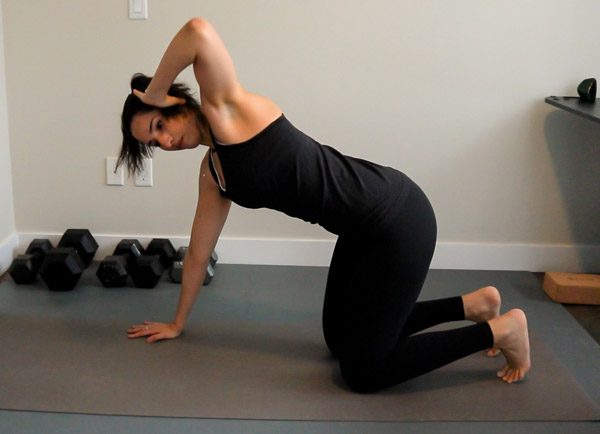
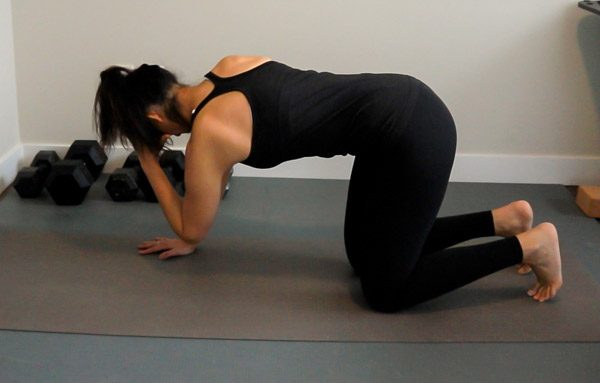
- Start on all fours, hands below your shoulders and knees below your hips.
- Bring your hand behind your head, rotate out, bring your chest towards the side, and then turn inward, bringing your elbow towards your hand.
- Complete 10-12 repetitions on each side.
- Complete this exercise 1-2 times a day.
Open Book Thoracic Rotations
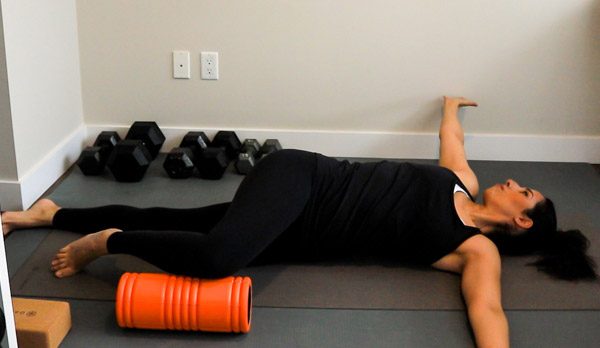
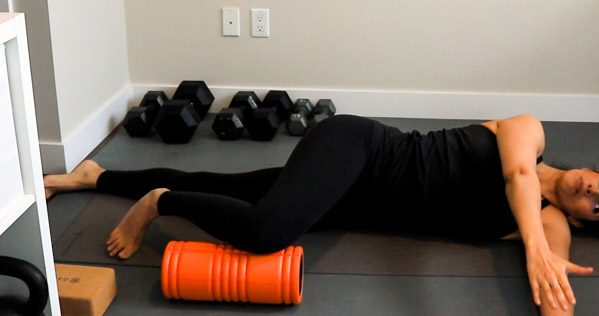
- Lie on your side with your hands stretched out in front of you.
- Rest your top leg on a roller or block to stabilize your hips. We want to minimize movement at the hips and focus on spinal rotation.
- Lift your top arm and rotate out until you reach behind you. Reach as far behind as you can without forcing the movement.
- Complete 10-12 repetitions on each side.
- Repeat this exercise twice a day.
Roller Thoracic Spine Extensions
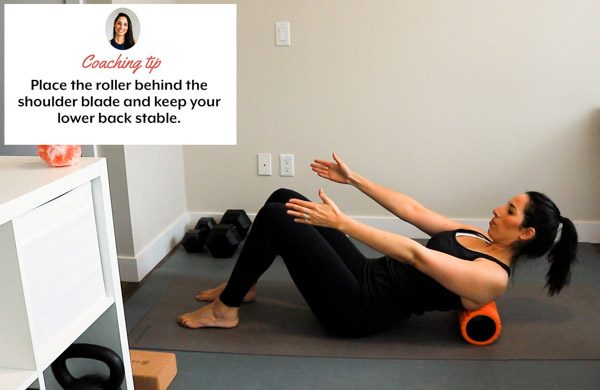
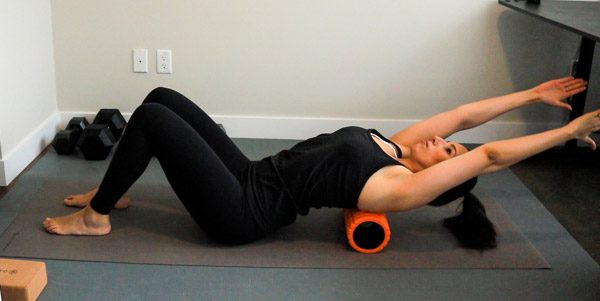
- Lie on the foam roller. Place the roller under the upper-mid back area. Remember how we don’t want to roll the lumbar spine area.
- Stretch your arms up parallel to your neck and head. Or place your hands behind your back if you’re feeling neck tension.
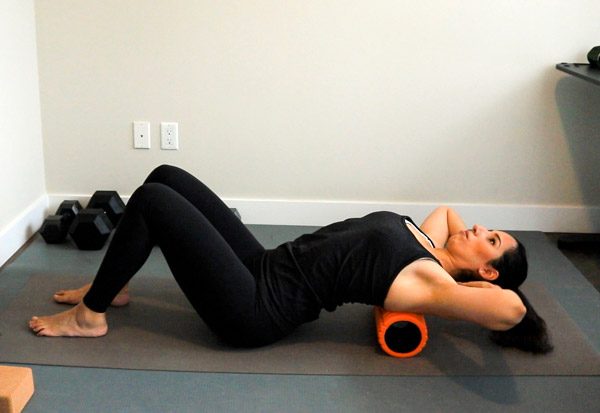
- Roll the mid-back on the mat by extending your spine on the roller and back to a neutral position. The roller helps release any tightness in that area and mobilizes the spine.
Did you find this post helpful so far? If so, please consider sharing it with others!
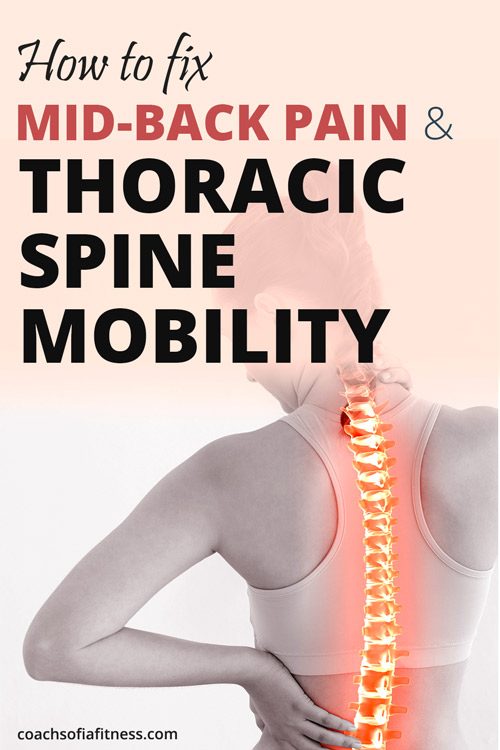
Thoracic Extensions (Roller, chair, bench)
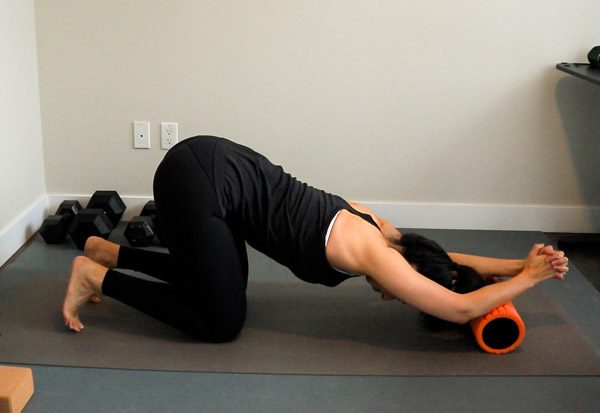
- Place your forearms on the roller, bench, or chair. It doesn’t matter which tool you use for this exercise.
- Stretch out your back and slightly arch your back by naturally letting your chest drop to the floor.
- Then slightly lift your lower rib cage
- Complete 6-8 repetitions
Wall Windmill
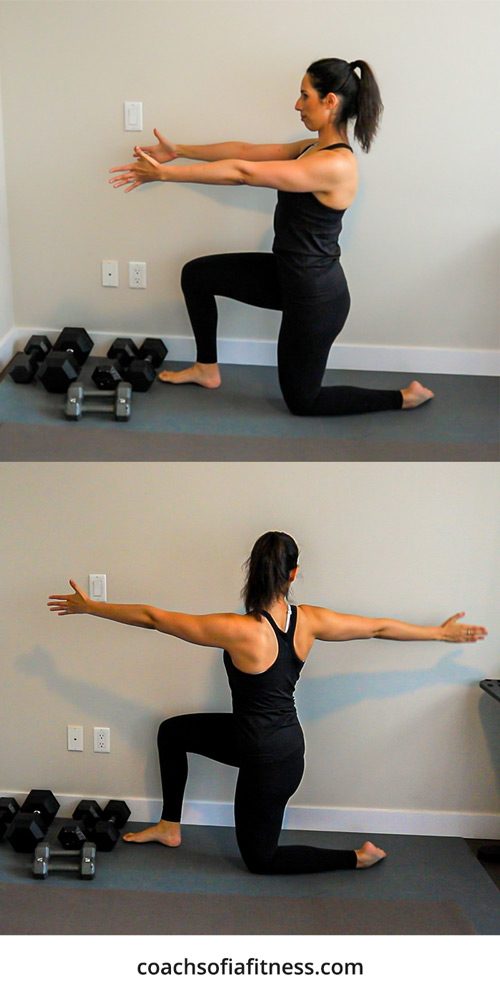
- Begin in a lunge position, with your forward leg closer to the wall.
- Extend one or two arms in front of you
- Keep one arm forward and rotate your arm in a circular motion over your head while keeping your arm closer to the wall.
- Follow your arm movement with your head to ensure you’re not just moving your shoulders but your thoracic area as well.
- Complete 8-12 repetitions on each side and repeat 1-2 times a day.
You can also start with just one arm rotations and progress to both arms:
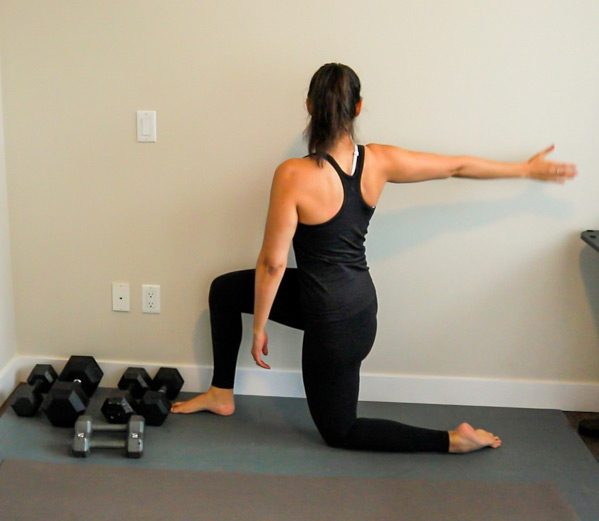
Cat Camel (small moves)
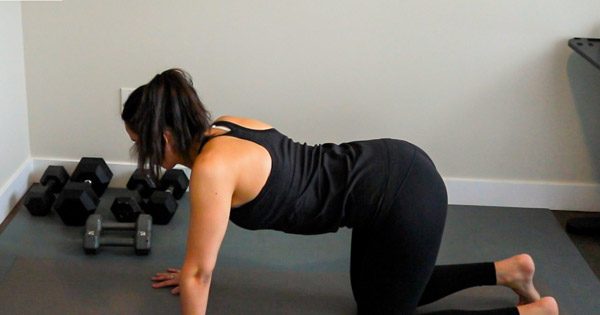
An important note about this exercise: If you have a lumbar disc herniation or get the pain overextending or bending over, make sure you don’t over-arch or over-flex your spine. Focus on elevating your rib cage and going back to a neutral position
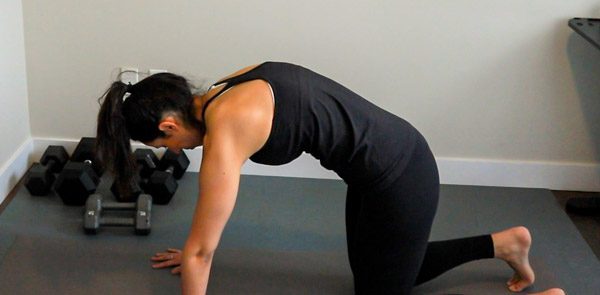
- Begin on all fours.
- Slightly arch your mid-back and disengage your shoulders, so your chest drop. Avoid overarching your back.
- Slowly return to starting position and start elevating your rib cage and chin towards your chest.
- Focus on the middle part of the movement instead of overarching or over flexing your spine.
- Breathe deeply.
- Complete ten repetitions and hold the end position for 1-2 seconds.
- Repeat this exercise 1-2 times a day as needed.
DB/Plate Around The World
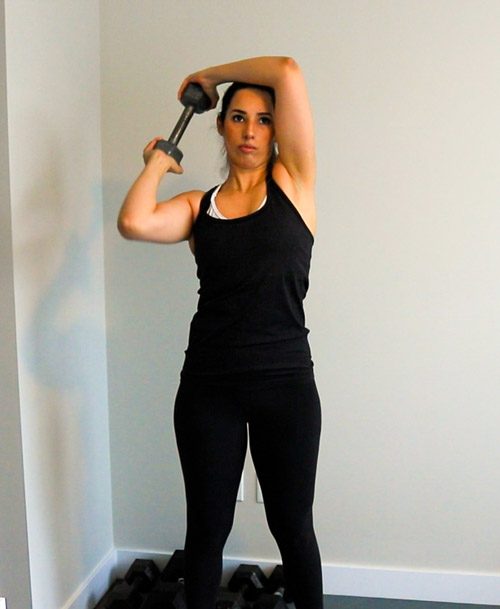
- Grab a light dumbbell or plate. I’m using a 10 lbs dumbbell. Use what feels light to you.
- Stand with your feet shoulder-width apart. Brace your core and glutes
- Keep your hips stable. Hold the weight in both hands, extend your arm, and circle the weight around your head, ending in the starting position. Then repeat on the other side.
- Make sure you initiate this movement with your mid-upper back and shoulders. Your core is strong, and your hips are not moving.
- Squeeze your glutes for additional lumbar support!
Make sure to watch the video tutorial above. I demonstrate each exercise.
Recommended program: Back Pain Control

References:
[ad_2]
